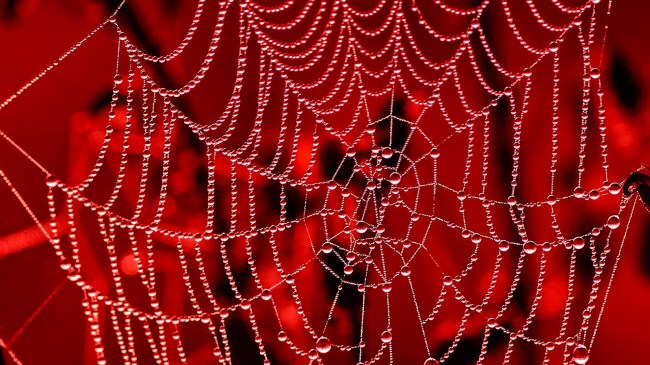iStockphoto
Scientists used CRISPR gene editing technology to make spiders produce glowing red silk. They did this in an effort to eventually have spiders create “supermaterials” for use in a wide range of applications and in industries such as textiles, medicine, and aerospace.
The results of this new research, published in the scientific journal Angewandte Chemie, reveal they were able to do this using just a species of common house spider (Parasteatoda tepidariorum). To create this glowing red silk, the scientists developed a gene sequence for a red fluorescent silk protein and injected it into the female spiders’ unfertilized eggs. The female spiders then mated with males of the same species, which produced offspring that spun red, fluorescent dragline silk.
“We have demonstrated, for the first time worldwide, that CRISPR-Cas9 can be used to incorporate a desired sequence into spider silk proteins, thereby enabling the functionalisation of these silk fibres,” Professor Dr. Thomas Scheibel, Chair of Biomaterials at the University of Bayreuth and senior author of the study, said in a statement. “The ability to apply CRISPR gene-editing to spider silk is very promising for materials science research – for example, it could be used to further increase the already high tensile strength of spider silk.”
Also as a part of this research, the scientists were able to successfully use a gene editing tool that deactivates a specific gene called sine oculis in the spiders. In this case, they deactivated a gene that is used for eye development. The result was spider offspring born with less eyes than normal or no eyes at all.
Even before proving that CRISPR technology can be used to alter a spider’s silk, there were already certain spiders that produce silk significantly lighter and tougher than Kevlar, and more elastic.
“Until now, modifying spider silk’s properties required costly, lab-based post-extraction processing, which is difficult to scale,” Jesus Diaz of Fast Company reports. “This study shows that altering silk directly within the organism is feasible, paving the way for custom-designed silks with enhanced properties.”
One of the biggest obstacles to mass producing spider silk is the fact that they are cannibalistic. So it would be almost impossible to be able to farm enough genetically modified spiders to mass produce it. Instead, scientists may attempt to apply similar technology to create genetically modified silkworms or goats. Yes, goats.
Content shared from brobible.com.

